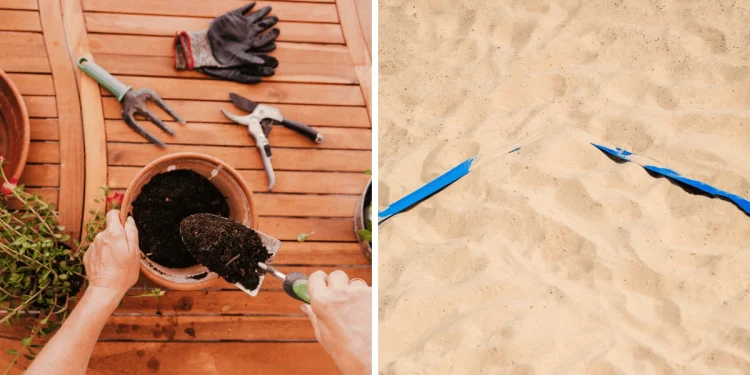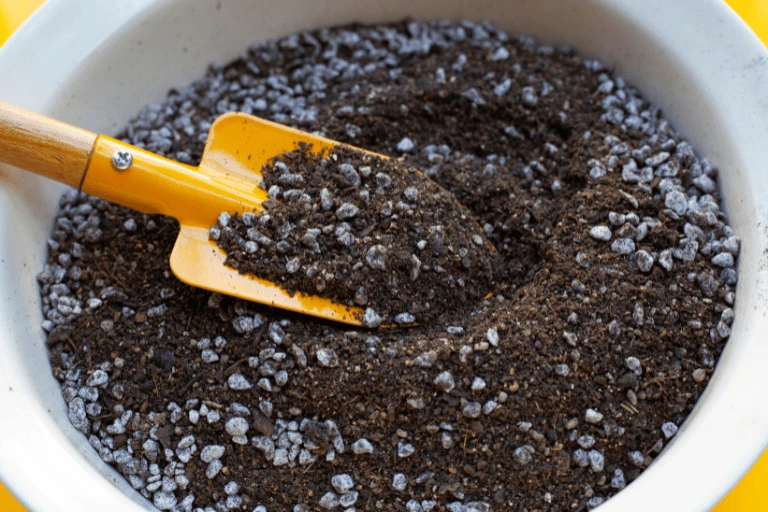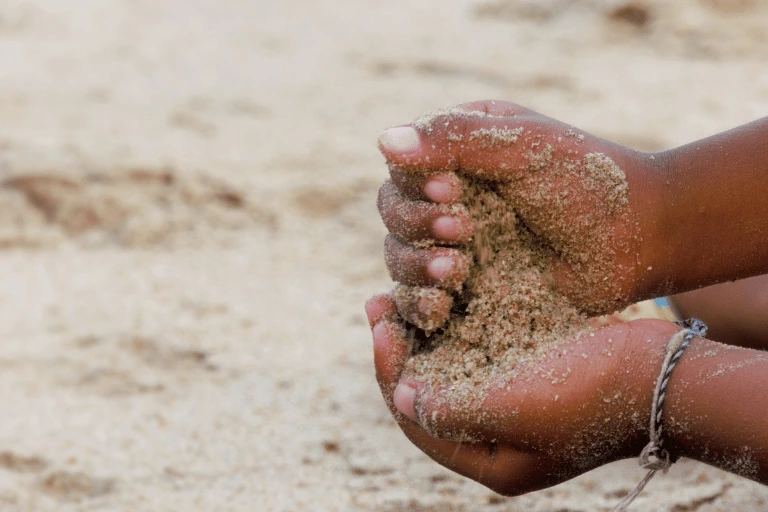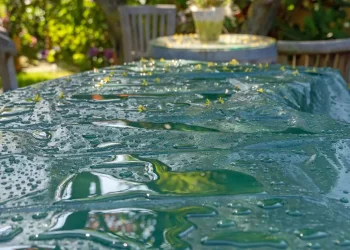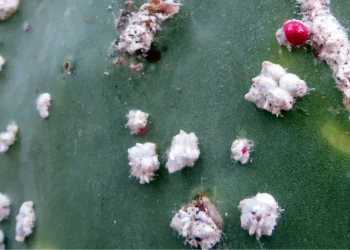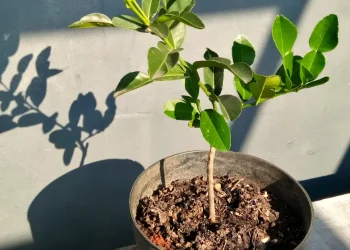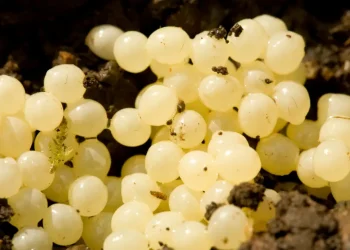As I was digging around in my garden, I was missing just a few handfuls of sand. And I couldn’t help but notice the beautiful, soft, clean sand at the beach nearby. I started wondering, “Could I use beach sand in my garden?” I mean, garden, play sand, and beach sand look all very similar, what could be the issue? And it also carries one extra advantage – it’s really cheap compared to gardening sand.
Well, as it turned out, just because play sand is safe for children, it doesn’t mean it’s safe for plants. Play sand is usually packed with minerals and salts that could burn the roots of your plants and is also very fine, which could restrain the optimal water and oxygen flow.
And the situation is very similar with beach sand as well. You really shouldn’t use any other sand in the garden apart from sand specifically made for it.
However, you could use it as a last resort – but only if you prepare it correctly! And that’s what we’ll focus on in the article. We’ll discuss the difference between garden sand and other alternatives in more depth and also check how to sterilize play or beach sand so that you can use it in your garden without many adverse effects.
Why is Sand Added to Soil Mixes?
Sand is a popular ingredient added to any soil mixes for a few reasons. One of the main benefits of adding sand is to improve the soil’s drainage and aeration.
Soil that’s too dense or compacted can cause water to pool on the surface, which can lead to root rot and other issues. And sand fixes that by creating spaces in the soil that allows air and water to flow freely. Additionally, it can also help balance the soil’s pH levels and improve the texture of the soil.
It’s very likely that your potting mix already includes a small percentage of sand, apart from other additions like perlite or peat moss. So it’s not usually needed to add more than that, but garden soil is usually poor on sand, and depending on the plants you are planting, you might want to add more. But even so, you shouldn’t overdo it.
Benefits of Adding Sand
- Imrpoves drainage
- Increase aeration
- Improves soil struscture
- Can help balance pH
Negatives of Too Much Sand
- Poor water retention
- Soil compaction
- Nutrient depletion
Can you Use Play or Beach Sand for Gardening?
Adding play sand to anything other than a playbox or taking beach sand away from the beach is usually a pretty bad idea. There are a few issues associated with these types of sand.
For starters, the first issue comes with the grains itself. Play sand is typically made from extremely finely crushed quartz. There’s no issue with the material itself, horticultural sand often also contains quartz, but it’s the coarseness that may cause issues. And as a result, it doesn’t help create drainage but quite the opposite.
When you mix too much of it into the soil, it can become too compacted, not letting any water through.
Beach sand usually contains bigger pieces. It’s a mixture of minerals, shells, and organic matter, which can be a real breeding ground for harmful pathogens, which can harm your plants and ultimately even pose a health risk to humans.
Additionally, especially beach sand can contain high levels of salt, which can even burn the roots of your plants. Which we can pretty easily deal with, as you will see in one of the following sections.
How is Horticultural Sand different from Play Sand?
Horticultural sand is very different from play sand in your child’s playbox or sand on your favorite beach. For starters, horticultural sand is made for plants and is specifically developed to meet their needs.
It’s made from a blend of minerals, such as silica, quartz, and granite, which have been screened and washed to remove impurities. These materials are crushed a lot coarser, which improves soil drainage and aeration without compacting or settling over time.
On the other hand, play sand is typically made from crushed quartz as finely as possible and possibly other minerals. After all, you don’t want your children to themselves on a sharp rock. Play sand may contain a lot of impurities, such as clay, silt, or other organic matter, including harmful pathogens, which can negatively impact plant growth and health.
That’s similar to beach sand, which can contain everything, and you can’t be sure of its composition.
How to Prepare Play Sand for Usage in Gardening
But as I promised, you can clean the play sand or beach sand in a way that it can be used in your garden as a last resort. Our goal here is to eliminate any harmful pathogens and reduce salt levels.
Start by sifting it through a fine mesh sieve to remove any large particles or debris. Finish this step by rinsing the sand thoroughly with water to remove any remaining impurities.
At this point, we got rid of any visible impurities, but the sand is still full of small bugs, bacteria, viruses, and germs of these pathogens that aren’t visible with a bare eye. So we need to sterilize the sand to kill them effectively.
There are many different ways to sterilize sand. I’ve covered them in depth in an article on How to sterilize soil. Since you probably don’t need tons of sand, I would go with sterilization in an oven. This method is fast and suitable for smaller batches.
When you cleaned the sand of any large impurities, spread it evenly on a baking sheet. If it has dried by then, moist the sand using a spray bottle or simply put it under a faucet. The goal here is a moist, not runny mixture.
Then cover the top with aluminum foil and poke a few small holes in the foil lid to let the steam escape. And finally, put the sand into a preheated oven to 180-200°F (80-95°C). And let it “bake” for an hour or so.
Once done, let the sand cool down completely before using it.
If you’ve prepared a play sand like that, still don’t use too much of it. The sand is still too fine, just mix a few handfuls into your soil mix. You can always add more, but it’s a lot harder to remove it once it’s added.
Conclusion
Adding sand to your soil mix can be beneficial for plants’ health and growth. But not every sand is suitable, or rather one sand type is perfectly suitable, and that’s horticultural sand specially made for use in gardens.
But if you give it the right care, you can use it as a last resort.

